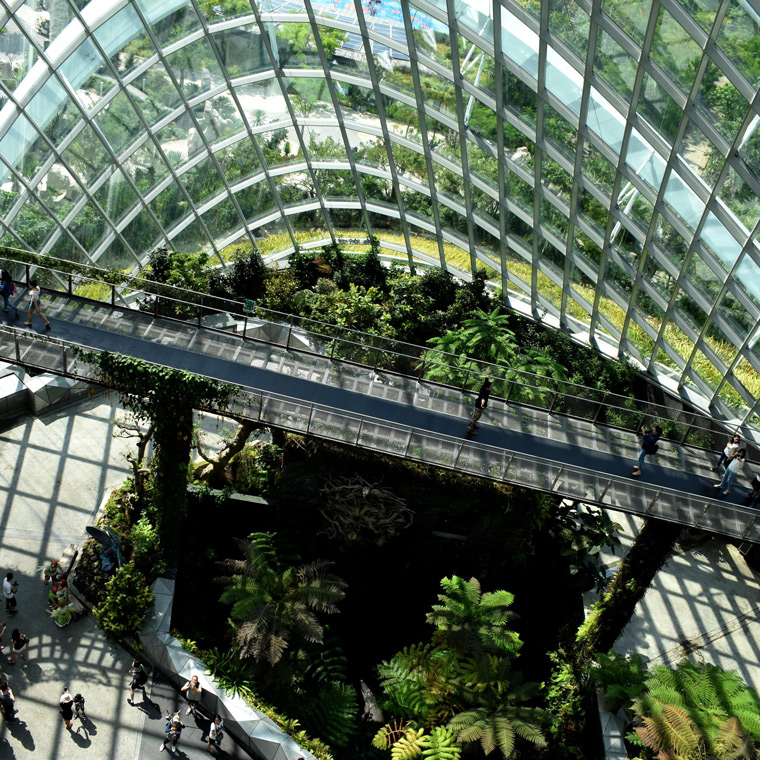Sustainability: How We Measure Up
With current climate changes, a rapidly expanding world population, and a shortage of resources, our planet is in urgent need for sustainability. As growth continues to put on added strain, so does the need to support expanding societies. Across the globe, a move toward urbanisation and more recent infrastructure booms have doubled the pressure.
Almost 40 percent of carbon dioxide emissions and over 50 percent of natural resources consumption is from the building and construction industry. Sustainability planning and more energy-efficient materials are needed to curb these figures and reduce environmental impacts during construction. Since building operations and maintenance can also generate a substantial effect on the environment, the full life cycle of a building should be considered when designing sustainable structures, including materials.
In response to this, many principles, regulations, and certifications for building materials have been enacted to bridge the gaps of environmental concerns and lasting sustainability. Green building schemes were developed to focus on the environmental effects of a building. Their goal is to transform the way buildings and communities are designed, built, and operated, enabling an environmentally and socially responsible practices for a healthy environment that improves the quality of life. The Leadership in Energy and Environmental Design (LEED®) certification system was developed by the U.S. Green Building Council to encourage the construction of energy and resource-efficient buildings that are healthy to live in. LEED is the most widely used green building rating system in the world and includes nine environmentally impactful categories. Armacell’s Solution Portfolios can influence three of these categories with our mechanical insulation, energy and atmosphere, material and resources, and indoor air quality.
The WELL Building Standard™ version 2 (WELL v2™) is a vehicle for buildings and organisations to deliver more thoughtful and intentional spaces that enhance human health and well-being. We can contribute to certifying new and existing buildings, retail spaces, multi-family residential, education facilities, and restaurants through our mechanical insulation that impact the four major categories of air quality, thermal comfort, acoustics, and sustainable materials.
Other global standards like BREEAM®, Living Building Challenge and Green Globes also inspire architects to create built environments that promote health and wellness, environmental sustainability, and energy efficiency.
Material certifications can set sustainable guidelines for materials to follow to lower their impact on the sustainability of the building. UL GREENGUARD Gold Certification sets strict standards to regulate the level of chemical emissions of a product. It also ensures a product is acceptable for use in areas where volatile organic compounds (VOC) levels are tightly controlled. Certified products are screened for over 10,000 VOCs and require annual re-certification and monitoring. We make many insulation products that are UL GREENGUARD Gold Certified, fall below the listed thresholds, and do not particulate. Our products also exceed the requirements of the California Department of Public Health (CDPH) Standard Method v1.1-2010.
Meeting these standards is at our core, but our commitment to sustainability and environmental protection goes even further. Our elastomeric insulation products are not manufactured with CFCs, HFCs, HCFCs, PBDEs, or Formaldehyde. The Registration, Evaluation, Authorisation and Restriction of Chemicals (REACH) addresses the production and use of chemical substances and their potential impacts on human health and the environment; our products do not contain any substances of very high concern (SVHC) above the threshold limit included in the most recent REACH SVHC.
Our Products. Our Commitment.
Our thermal insulation can influence a building’s energy and indoor air atmosphere favourably by saving energy in HVAC, plumbing, and refrigeration applications and they can also contribute towards installed-cost savings. By insulating these mechanical systems contractors and building owners can optimise energy savings and achieve increased levels of energy performance beyond the prerequisite standard.
Material and resources are important, and standards encourage the use of products and materials for which life cycle information is available and that have environmentally, economically, and socially preferable life cycle impacts. We are the first and only elastomeric insulation manufacturer in North America to release Environmental Product Declarations (EPDs), for ArmaFlex® sheet, roll, and tube insulation. By selecting products from manufacturers like us who have verified improved environmental life cycle impacts, the building industry leaders can promote sustainability from within.
A third significant sustainability societal concept that we can influence is indoor environmental quality. By reducing concentrations of chemical contaminants that can adversely affect air quality, human health, productivity, and the environment, material manufacturers can dramatically decrease exposure concerns. By providing spaces that have effective acoustic design promotes occupants’ well-being, productivity, communications, and occupant comfort. Our duct liner solutions can significantly reduce structure-borne noise due to mechanical systems.
We are dedicated to more than just creating products that save energy. We are dedicated to integrating sustainability in all aspects of the product life cycle and in our work environments, now and in the future.




